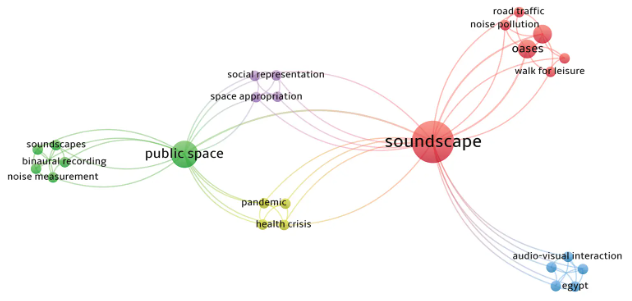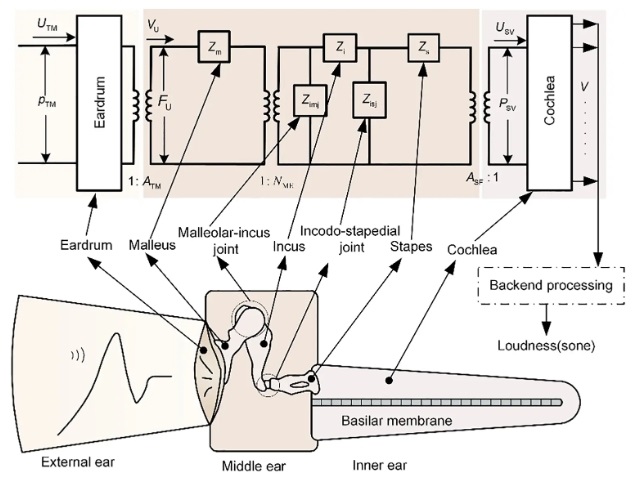Coupled Helmholtz resonators for broadband Aeroacoustic noise mitigation
Abstract
As a structurally simple acoustic element, Helmholtz resonators can exhibit strong resonance when acoustic waves enter the cavity, thus providing excellent sound absorption effects. Consequently, they are widely applied in automotive engine and exhaust systems. This paper systematically investigates the noise reduction performance of multiple coupled Helmholtz resonators under conditions with and without tangential flow. A finite element simulation model with multiple Helmholtz resonators is established by employing COMSOL Multiphysics software to solve the linearized Navier-Stokes equations in the frequency domain. The simulation results demonstrate that the structure, which couples multiple Helmholtz resonators, can effectively broaden the low-frequency sound absorption band under the influence of a flow field, enhancing the transmission loss across the entire low-frequency band. This structure holds significant potential for applications in automotive exhaust systems and aero-engine noise reduction.
References
[1]Feng XN. Optimization research on vibration and noise of exhaust system of a model[D]. Hunan University, 2020.
[2]Li C, Wang X, Li Y. Experimental study on aerodynamic noise characteristics and control of non-fully open low-speed cavities[J]. Applied Acoustics, 2023, 212: 109600.
[3]Zhao L, Lam Y C, Lai C Q. Interaction of ultrasound with microporous polyethylene scaffolds[J]. Applied Acoustics, 2019, 153: 102–109.
[4]Zhao X, Liu Y, Zhao L, et al. A scalable high-porosity wood for sound absorption and thermal insulation[J]. Nature Sustainability, 2023, 6(3): 306–315.
[5]Sheng M, Wang M Q, Sun J C. Fundamentals of Noise and Vibration Control Technology [M]. Beijing: Science Press, 2007.
[6]Jena D P, Dandsena J, Jayakumari V G. Demonstration of effective acoustic properties of different configurations of Helmholtz resonators[J]. Applied Acoustics, 2019, 155: 371–382.
[7]Zhang W, Xin F. Broadband low-frequency sound absorption via Helmholtz resonators with porous material lining[J]. Journal of Sound and Vibration, 2024, 578: 118330.
[8]Bi S, Wang E, Shen X, et al. Enhancement of sound absorption performance of Helmholtz resonators by space division and chamber grouping[J]. Applied Acoustics, 2023, 207: 109352.
[9]Li H, Wu J, Yan S, et al. Design and study of broadband sound absorbers with partition based on micro-perforated panel and Helmholtz resonator[J]. Applied Acoustics, 2023, 205: 109262.
[10]Yang X, Shen X, Yang F, et al. Acoustic metamaterials of modular nested Helmholtz resonators with multiple tunable absorption peaks[J]. Applied Acoustics, 2023, 213: 109647.
[11]Pan W, Xu X, Li J, et al. Acoustic damping performance of coupled Helmholtz resonators with a sharable perforated sidewall in the presence of grazing flow[J]. Aerospace Science and Technology, 2020, 99: 105573.
[12]Mahesh K, Mini R S. Investigation on the Acoustic Performance of Multiple Helmholtz Resonator Configurations[J]. Acoustics Australia, 2021, 49(2): 355–369.
[13]Liu H, Wang J, Zhang X, et al. Research on the Generation Mechanism and Suppression Method of Aerodynamic Noise in Expansion Cavity Based on Hybrid Method[J]. Computer Modeling in Engineering & Sciences, 2024, 139(3): 2747–2772.
[14]Hoppen H, Langfeldt F, Gleine W, et al. Helmholtz resonator with two resonance frequencies by coupling with a mechanical resonator[J]. Journal of Sound and Vibration, 2023, 559: 117747.
[15]Selamet E, Selamet A, Iqbal A, et al. Effect of Flow on Helmholtz Resonator Acoustics: A Three-Dimensional Computational Study vs. Experiments[C]//SAE 2011 Noise and Vibration Conference and Exhibition. 2011: 2011-01-1521.
[16]Menter F R. Two-equation eddy-viscosity turbulence models for engineering applications[J]. AIAA Journal, 1994, 32(8): 1598–1605.
[17]Dandsena J, Jena D P. Acoustic attenuation and effective properties of single and periodic Helmholtz resonators having porous core[J]. Applied Acoustics, 2023, 211: 109490.
[18]Papadakis N M, Stavroulakis G E. FEM Investigation of a Multi-Neck Helmholtz Resonator[J]. Applied Sciences, 2023, 13(19): 10610.
[19]Pagliaroli T. Wall pressure fluctuations in rectangular partial enclosures[J]. Journal of Sound and Vibration, 2015.
[20]Rayleigh, John William Strutt, Baron, Lindsay, Robert Bruce. The theory of sound[M].Dover Publications, 1945.
Copyright (c) 2024 Zixiang Xiong, Xuxu Zhuang, Zhaoyong Sun, Liuxian Zhao

This work is licensed under a Creative Commons Attribution 4.0 International License.









